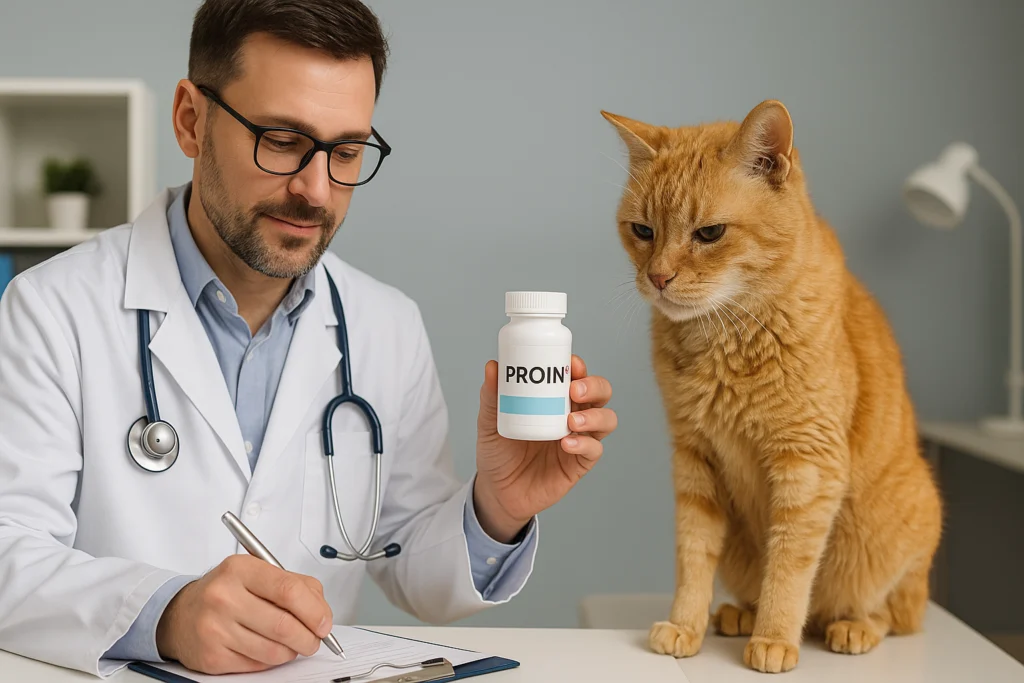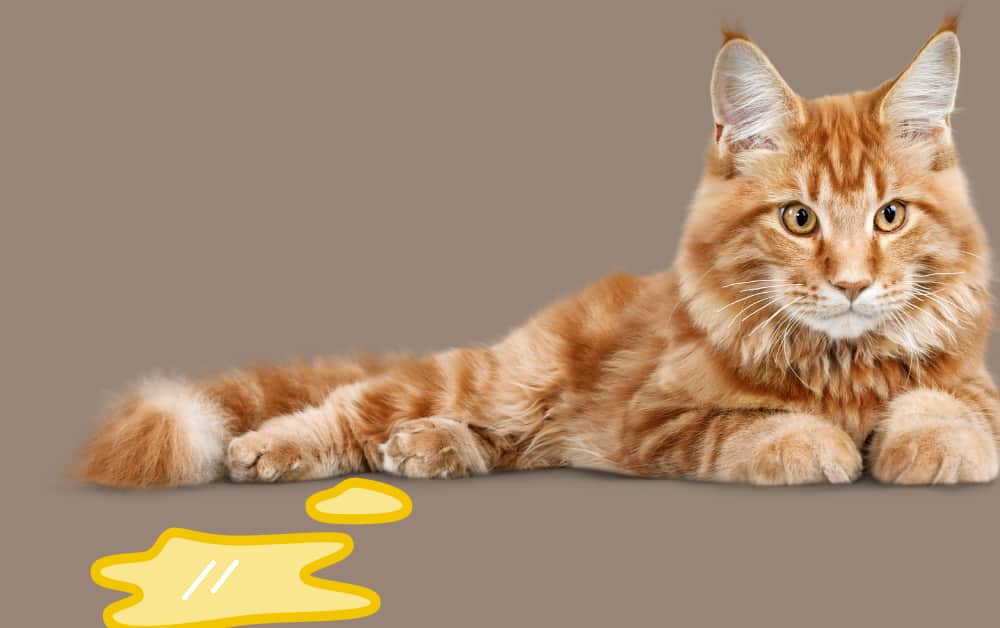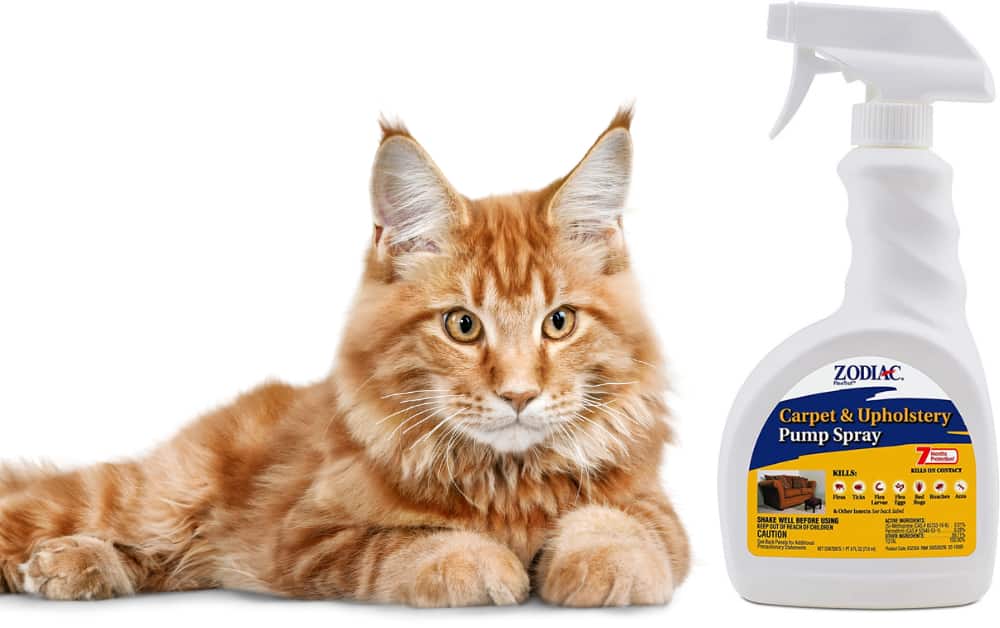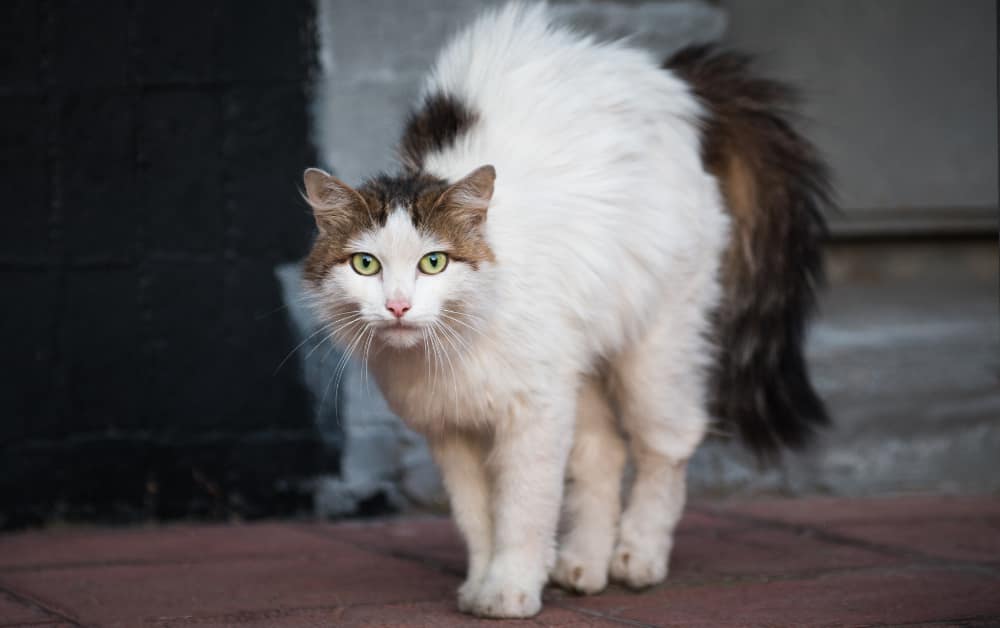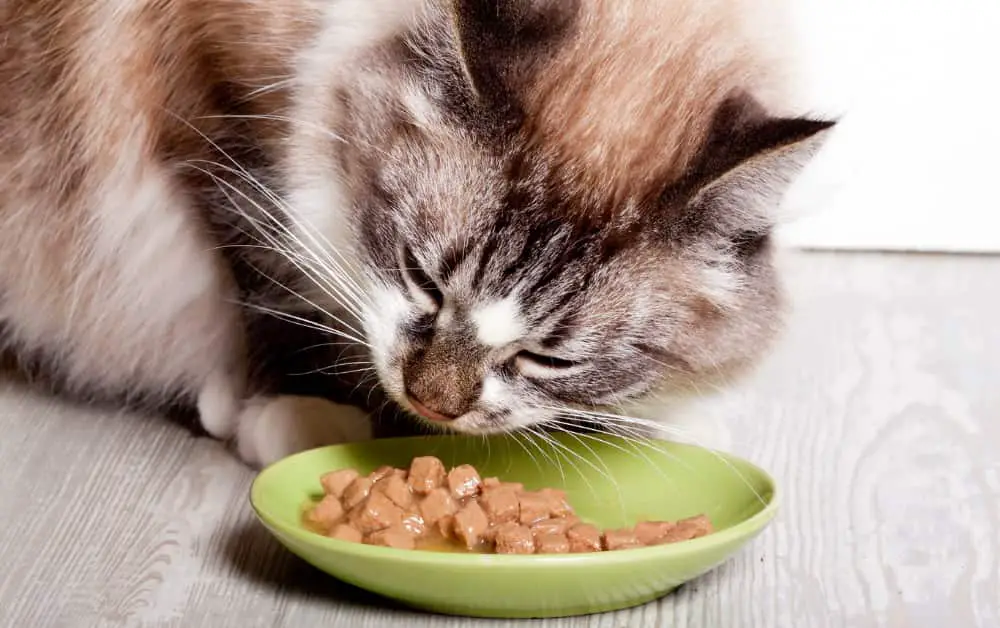If your cat is struggling with urinary incontinence, your vet might prescribe PROIN®. But what is it exactly, and how safe is it for feline use?
In this post, we’ll break down the dosage chart, potential benefits, and side effects of PROIN® for cats everything you need to know before starting treatment.
PROIN® Dosage For Cats
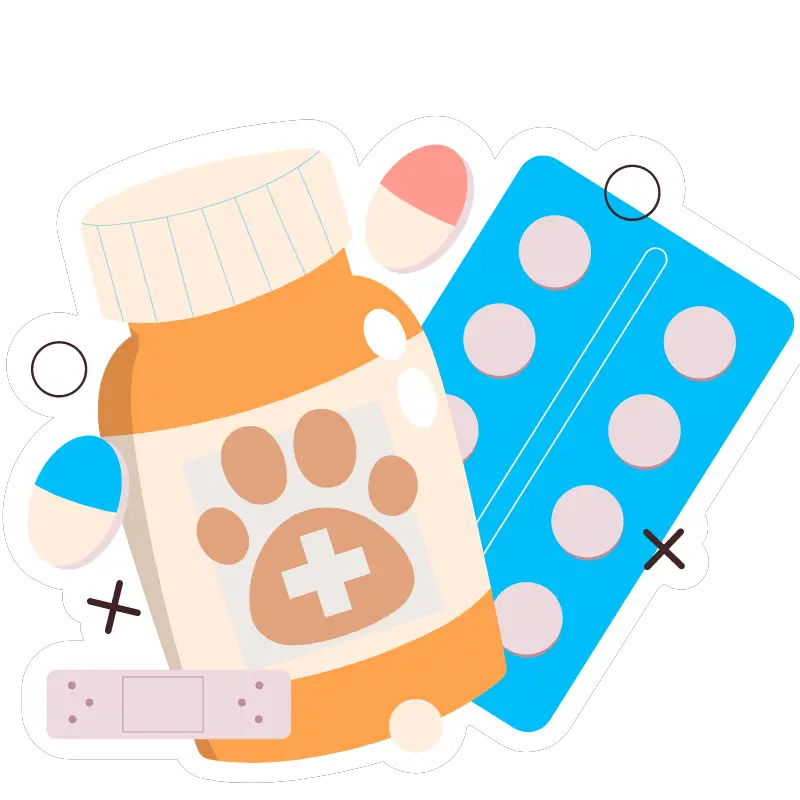
-
Ideal Dose: 1-1.5 mg/kg (0.4-0.6 mg/lb)
-
Uses: For treating urinary incontinence in cats.
-
FDA Approved: Proin® is an FDA approved.
-
Variants: Tablets, Liquid.
-
Storage & Handling: Room Temperature.
-
Administration: Every 8 to 12 hours.
PROIN® Dosage For Cats
The veterinarian-recommended dosage of PROIN® (Phenylpropanolamine) for treating urinary incontinence in cats is 1-1.5 mg/kg (0.4-0.6 mg/lb) for cats weighing more than 3 kg. However, the dosage of the medication can be adjusted, either increased or decreased, based on the severity of the urinary incontinence.
PROIN® For Cats Dosage Chart By Weight
| Cat Weight (kg) | Cat Weight (lbs) | PROIN® Dosage Range (mg) |
|---|---|---|
| 3-3.9 | 6.6-8.6 | 1.0-1.5 |
| 4-4.9 | 8.8-10.8 | 1.2-1.8 |
| 5-5.9 | 11-13 | 1.5-2.2 |
| 6-6.9 | 13.2-15.2 | 1.8-2.7 |
| 7-7.9 | 15.4-17.4 | 2.1-3.2 |
| 8-8.9 | 17.6-19.8 | 2.4-3.6 |
| 9-9.9 | 20-21.8 | 2.7-4.2 |
| 10-10.9 | 22-24 | 3.0-4.5 |
What Is PROIN®?
PROIN® (phenylpropanolamine hydrochloride) is a medication primarily FDA-approved for dogs to manage urinary incontinence due to urethral sphincter hypotonus. Although not officially approved for cats, some veterinarians may prescribe it off-label under close supervision.
Is PROIN® Safe for Cats?
While widely used in dogs, the use of PROIN® in cats is considered off-label and requires careful veterinary supervision. Cats are more sensitive to certain medications, and dosages must be precisely calculated. It is typically only considered when other treatments like phenylpropanolamine alternatives, hormone therapy, or dietary adjustments are ineffective.
Benefits of PROIN® for Cats
- Improved bladder control – Helps reduce or eliminate dribbling or frequent urination.
- Better quality of life – Your cat may become more comfortable and less anxious.
- Alternative to hormone therapy – Especially helpful for spayed females who can’t tolerate estrogen-based treatments.
- Reduced accidents in the home – Helps maintain a cleaner, more hygienic environment.
Potential Side Effects in Cats
| Common Side Effects | Less Common / Serious |
|---|---|
| Increased heart rate | High blood pressure |
| Restlessness or agitation | Vomiting or diarrhea |
| Appetite changes | Seizures (in rare cases) |
| Pacing or vocalizing | Collapse or difficulty breathing |
DO NOT USE in cats with:
Alternatives to PROIN® for Cats
If PROIN® isn’t suitable, consider discussing the following with your vet:
- Phenylpropanolamine in compounded form (more customizable)
- Hormone therapy (e.g., DES or estriol)
- Prazosin (a muscle relaxer that can help bladder outflow)
- Behavioral or environmental interventions
You May Also Like To Read:
FAQs
Is it safe to give PROIN® without a vet’s advice?
No. PROIN® should only be administered under veterinary supervision due to serious risks if dosed incorrectly.
How quickly does PROIN® work in cats?
You may see improvement in urinary control within a few days, but it can vary.
Can I stop PROIN® suddenly?
Sudden withdrawal can cause relapse of symptoms. Always taper off under vet guidance.
Can I give my cat PROIN® that’s meant for dogs?
Not without precise vet-calculated dosing. Dog tablets may be too strong or poorly tolerated in cats.


